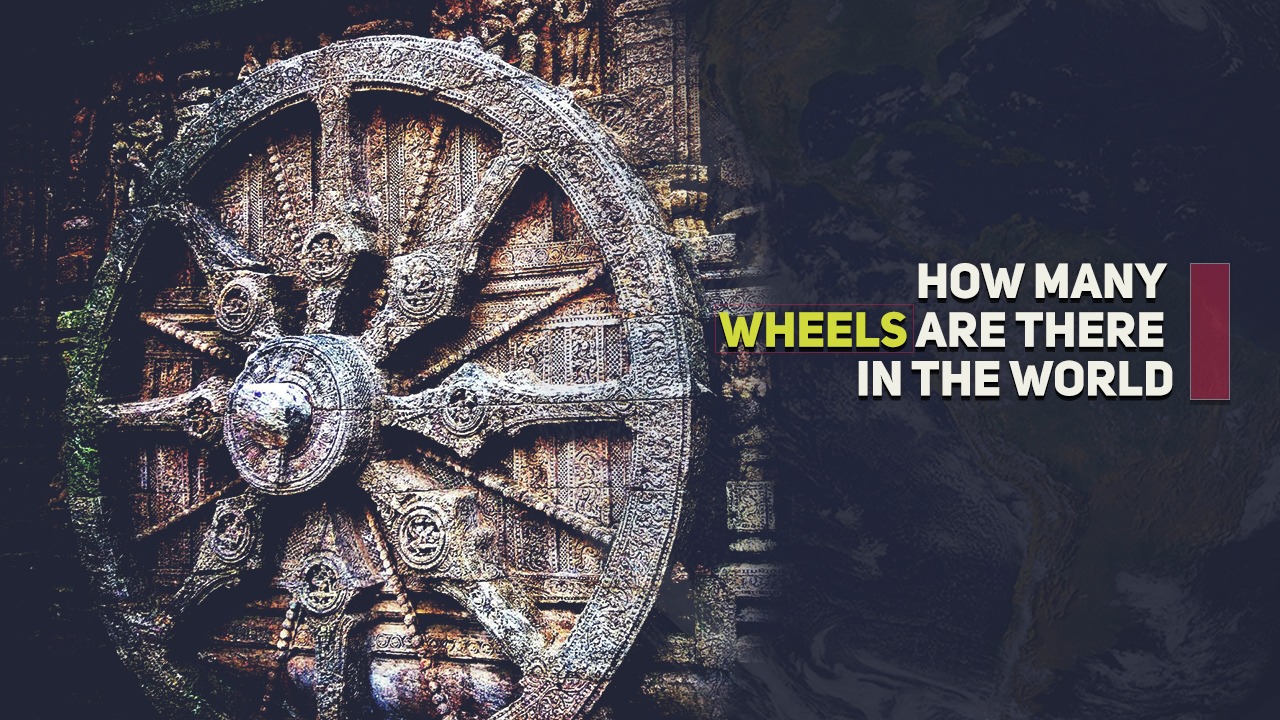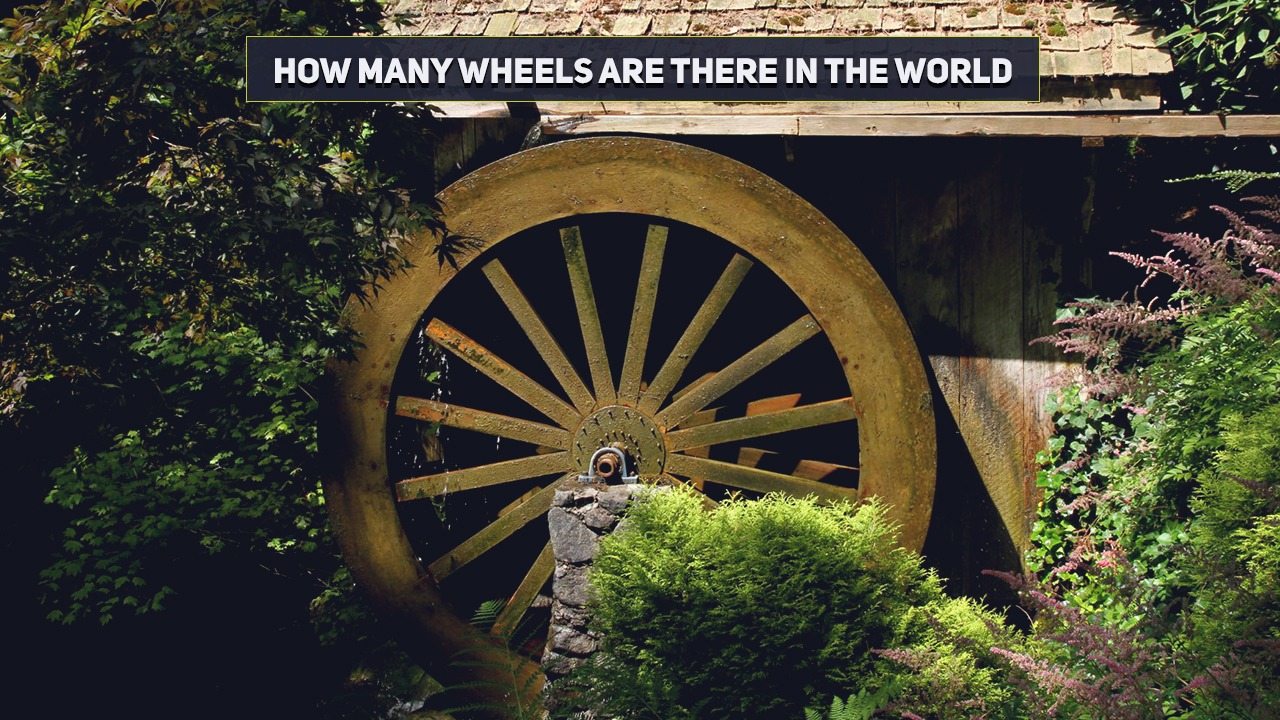Ever wondered how many wheels are there in the world? This question might sound simple, but it opens up a world of curiosity. From cars zooming down highways to toy trains running along their tracks in living rooms, wheels are everywhere.
But just how many? That’s a tough nut to crack.
Interestingly, Ryan Nixon’s social media debate about whether the world has more doors or wheels got people talking. It turns out; this is not just child’s play.
Our investigation aims to shed light on this spinning mystery, offering insights into the sheer scale of wheels worldwide. Ready for the ride? Keep reading!
Understanding the Concept of a Wheel
A wheel is a round object that turns around a central point. It helps move things more easily. From carts to cars, wheels play a big role in transportation. They help vehicles go faster and use less energy.
The idea of the wheel has been around for thousands of years. People first used them on chariots and wagons. Now, they are everywhere—on toys, bikes, and even machines in factories.
Wheels make our lives easier by helping us carry heavy loads over long distances without much effort.
The Historical Background of Wheels
Wheels started rolling thousands of years ago. People in ancient times made the first wheels from stone and wood to make moving heavy loads easier.
The First Wheels
Around 3500 BCE in Mesopotamia, people made the very first wheels. They used solid wood to shape them. These wheels did not move cars or carts at first. Instead, they helped with pottery and other household tasks.
It was a big step forward in how humans solved problems.
As time went on, these early civilizations realized that wheels could do more than spin clay pots. They began using them for wagons and chariots, marking the start of wheeled transportation’s long journey through history.
This move changed how goods and people moved across large distances, making life a bit easier for everyone involved.
Wheels in Ancient Civilizations
Long ago, ancient civilizations like Mesopotamia and the Indus Valley made a big leap. They invented wheels. This step changed how people moved things and themselves. Before wheels, moving heavy loads was tough work.
In places such as watermills and windmills, wheels started to play a crucial role.
These early societies built roads and developed trade routes thanks to wheels. They could go farther and spread their ideas wider. Wheels weren’t just for carts and chariots; they powered machines that helped in farming and building too.
Over time, the simple invention of the wheel kept getting better, leading to the incredible variety of wheels we see today.
Classification of Wheels
Wheels come in many types. Let’s look at a few, like wheels on cars, machines in factories, and the ones under office chairs.
Vehicle Wheels
Vehicle wheels are a big part of what makes cars, motorcycles, and bicycles move. Cars usually have six wheels if you count the ones for steering and gear shifting. This means when you see a car, it’s not just about those four tires touching the ground.
Motorcycles add to this total with their two wheels each, racing down streets worldwide. Then there are bicycles, over a billion of them! Each one adds two more wheels to our global count.
All these vehicle wheels combine rubber tires or sometimes airless types, on alloy rims for durability and better handling. Think about all the different vehicles moving around your city or town; each one relies on its own set of wheels to get from A to B.
Whether it’s dropping off kids at school in a passenger car or zipping through traffic on motorbikes, these wheels play a crucial role in our daily lives.
Industrial Wheels
Industrial wheels keep the world moving. These wheels are essential in factories, on construction sites, and in warehouses. They move heavy equipment and machinery smoothly from one place to another.
Manufacturers use different materials to make these wheels, such as cast iron or rubber, depending on their use. Some need to handle a lot of weight; others must be gentle on floors.
The variety of industrial wheels is vast because every industry has its own needs. Wheels for moving cranes are massive and strong. Others, used in food production plants, must not contaminate the products.
This diversity ensures that whatever the task at hand, there’s a wheel designed to support it efficiently and safely. Industry experts track these developments closely. As technology advances, we can expect even more types of industrial wheels to appear, making work easier across all sectors.
Caster Wheels
Let’s talk about casters. They’re those wheels you see on shopping carts, office chairs, and a lot of equipment we use daily.
| Type | Examples | Estimated Numbers |
|---|---|---|
| Office Furniture | Chairs, desks | Millions |
| Industrial Equipment | Moving trolleys, machinery stands | Hundreds of thousands |
| Medical Equipment | Hospital beds, IV stands | Tens of thousands |
| Retail | Shopping carts, display stands | Millions |
| Household | Tool chests, storage bins | Millions |
These wheels make moving things easier. From the chair you’re sitting on to the cart you use at the store, casters play a big role in our lives. The table shows just how common they are in various areas. Every caster counts, from the ones in our homes to those in hospitals and factories.
Caster wheels are vital in both public and private settings.
The current state of Wheels Globally
Today, wheels are everywhere, from cars and bikes to toys and machines. Find out more about wheels around the globe.
Number of Vehicles Worldwide
We now examine the main figures for vehicles on our planet. It is a figure that reflects our dependency on transportation and our progress through the centuries.
Starting with cars, it’s clear they dominate the scene, with an impressive 1.2 billion prowling roads worldwide. This number comes straight from the World Health Organization, a body that knows a thing or two about global statistics.
While we don’t have exact figures for motorcycles, bicycles, public transport vehicles, and commercial trucks, their presence is undeniable.
Updated estimates for motorcycles, bicycles, public transport vehicles, and commercial trucks may appear in future research.
What stands out from this data is the sheer scale of the global vehicle fleet. The numbers speak to human ingenuity in creating diverse modes of transport to meet needs.
This table is a snapshot and a starting point for deeper discussions on mobility, technology, and the environment. It invites us to ponder the numbers and the stories behind them—of journeys made, lives connected, and futures envisioned.
Number of Industrial Machines
Examining industrial machines and their wheels is like opening a treasure chest of innovation and progress. These machines power factories, workshops, and the entire manufacturing landscape. They range from small, precise instruments to gigantic, powerful engines.
Here’s a simple breakdown:
| Type of Industrial Machine | Approximate Count Worldwide |
|---|---|
| Manufacturing Equipment | Millions |
| Construction Vehicles | Hundreds of Thousands |
| Agricultural Machinery | Millions |
| Warehouse and Logistics Equipment | Millions |
This table gives us a peek into the vast range of industrial machines. Manufacturing equipment, from assembly line robots to CNC machines, numbers in the millions. They are the backbone of product creation, crafting everything from cars to kitchen appliances.
Construction vehicles like excavators, bulldozers, and cranes shape landscapes and cities. There are hundreds of thousands of them around the globe. Agricultural machinery such as tractors and combiners also numbers in the millions. They keep farms running and tables filled with food.
It is clear that industrial machines and their wheels are everywhere. They support daily life in ways we often overlook. Industry experts track these developments closely.
Number of Casters
Let’s talk about casters. They’re those wheels you see on shopping carts, office chairs, and much equipment used daily.
| Type | Examples | Estimated Numbers |
|---|---|---|
| Office Furniture | Chairs, desks | Millions |
| Industrial Equipment | Moving trolleys, machinery stands | Hundreds of thousands |
| Medical Equipment | Hospital beds, IV stands | Tens of thousands |
| Retail | Shopping carts, display stands | Millions |
| Household | Tool chests, storage bins | Millions |
Bicycles, office chairs, and carts all use casters that make moving things easier. The table shows how common they are in various areas. Every caster counts on homes, hospitals, and factories.
Caster wheels are vital in both public and private settings.
Future Prospects for Wheels
Wheels are about to get smarter and cleaner. They will use new technology to lessen harm to our planet.
Advancements in Wheel Technology
Developers are making wheels smarter and more durable. They have introduced airless tires that never get flat. This means less worry about a puncture when driving. Also, smart wheels now come with sensors.
These sensors can tell if the tire pressure is low or if the wheel needs more air.
Manufacturers are also trying to make wheels better for our planet. They test materials like bamboo for making wheels. Bamboo grows fast and uses little water, making it a good choice for reducing the carbon footprint of vehicles.
With these changes, cars and bikes might soon be much friendlier to the environment.
Researchers monitor these changes closely.
Environmental Impact
Making more wheels affects our planet. The process of creating and throwing away wheels adds to pollution and waste. This problem needs fixing because it hurts the land, water, and air.
Wheels are everywhere—on cars, bikes, and in factories. Each one comes from materials taken from the earth. Making them also uses a lot of energy.
Looking ahead, we must think about how to make wheels better for the earth. Solutions include designing wheels that last longer or can be reused. We should also find ways to make them less harmful to nature.
This means using materials that are kinder to the environment and methods that do not pollute as much. Taking these steps will help protect our planet while we keep moving forward with new wheel technologies.
Environmental research supports these measures.
Estimating the Number of Wheels in the World
Counting all the wheels in the world isn’t easy, but it’s clear there are a lot. From cars and bikes to toys and tools, wheels help us every day. We’ve seen that billions of them roll around our planet.
This journey showed us how vital they are, from history to now—and even into the future. Wheels keep turning, making life smoother for us all.
Cars
Examine cars and their wheels. With 1.446 billion automobiles cruising our planet, the significance of wheels in this segment cannot be overstated. Here’s a closer look at the numbers that keep vehicles—and much of daily life—rolling smoothly.
Cars play a massive role in daily life. They take people to work, help run errands, and allow exploration of far-off places. Each car typically has four wheels, though some larger vehicles might have more. These wheels work hard.
The future looks bright for car wheels. Innovators work to make wheels last longer and perform better. They are also working on making them more eco-friendly. This means cars may soon use wheels that help save energy and reduce pollution.
So, next time you ride in a car, take a moment to appreciate the wheels that make it all possible. They are a small part, but without them, our world would be very different.
Motorcycles and Bicycles
Motorcycles and bicycles contribute greatly to the wheel count. They add billions to the total, showing just how much people rely on them.
| Type | Global Count | Impact |
|---|---|---|
| Bicycles | Over a billion | Massive presence worldwide, crucial for both transport and leisure |
| Motorcycles | 49 million | Significant modes of transport, especially in dense cities and developing countries |
Bicycles and motorcycles make up a big part of daily life. They help people move around in crowded cities. They also offer a fun way to enjoy the outdoors. With over a billion bicycles and 49 million motorcycles, their mark on the global wheel count is hard to miss.
Toy Wheels
Examine toy wheels, a fascinating part of our investigation into the total number of wheels on Earth. LEGO, a giant in the toy industry, makes about 300 million wheels each year. This fact alone shows how vast the number of toy wheels is.
Here’s a closer look at the scale and variety of toy wheels:
| Type of Toy | Estimated Wheels Produced Annually |
|---|---|
| LEGO Vehicles | 300 million |
| Toy Cars and Trucks | Varies widely |
| Miniature Bikes and Motorcycles | Millions |
| Dolls with Rollerblades and Skates | Count in hundreds of thousands |
| Remote-Controlled Cars and Drones | Tens of millions |
| Toy Trains and Tracks | Unknown but significant |
This table gives a glimpse. The actual number of toy wheels out there is hard to pin down. Toys come and go. New ones hit shelves every day. Yet, some things stay constant. Children enjoy a toy car or the fun of a LEGO set. Each wheel, though tiny, plays a big part in these moments.
From simple rolling toys to complex models that mimic real vehicles, the variety of toy wheels is wide. They bring joy and spark creativity in young minds. LEGO’s 300 million wheels a year represent countless hours of fun, learning, and imagination.
Toy wheels might seem small in the grand scheme of things. But they are a huge part of play. Whether a plastic car zooms across a living room or a LEGO set comes to life, each wheel turns the gears of creativity. The toy wheel sector fuels play and imagination across the globe.
Household and Workplace Items
Wheels are everywhere, not just on roads but also in homes and workplaces. They make many tasks easier and more efficient. This section shines a light on everyday wheels that might be overlooked.
| Item Type | Examples | Role of Wheels |
|---|---|---|
| Home Appliances | Vacuum cleaners, movable air conditioners | Makes moving heavy appliances easier |
| Office Equipment | Chairs, file cabinets | Improves mobility and access within workspaces |
| Yard and Garden Tools | Lawnmowers, garden carts | Makes moving heavy loads across the yard easier |
| Kitchen Gadgets | Islands on wheels, trash bins | Increases kitchen flexibility and cleanliness |
| Recreation | Skateboards, scooters | Adds fun and mobility to outdoor activities |
| Children’s Toys | Toy cars, wagons | Encourages play and learning through movement |
| Personal Mobility | Wheelchairs, strollers | Essential for everyday mobility and access |
From the table above, it is clear that wheels play a critical role in both personal and professional lives. They make chores more manageable and improve work environments. These small but mighty tools help in many ways. Their impact goes far beyond transportation.
Experts note these wheels improve mobility in many settings.
Takeaways
Counting all the wheels in the world isn’t easy, but it’s clear there are a lot. From cars and bikes to toys and tools, wheels help us every day. We’ve seen that billions of them roll around our planet.
This journey showed us how vital wheels are, from history to now—and even into the future. Wheels keep turning, making life smoother for all.
Disclosure: This content is informational and not a substitute for professional advice. Data and estimates are sourced from recognized global agencies and verified industry reports. There are no affiliate relationships that influenced this content.









































